Rewiring Hope: How to Slowly Come Back to Life
Introduction
There are times in life when everything inside you feels… flat. Blunted. Disconnected.
You go through the motions, but the spark is gone. Joy feels out of reach. Your body may still be functioning, but your spirit is barely flickering.
This isn’t just sadness. It’s a kind of emotional shutdown—often caused by depression, trauma, chronic illness, burnout, or deep grief. And it can last weeks, months, or even years.
But here’s what’s important to know:
💡 You are not broken. You are not beyond repair. Hope can be rewired.
Even when your nervous system has been wired for survival… Even when you feel like a ghost in your own life… You can slowly, gently, begin the process of coming back to life.
This article is about rebuilding hope from the ground up—not as a feeling, but as a practice. You don’t have to leap into joy. You just need to find the next flicker.
Looking for online therapy? Click here.
🧠 Why Hope Disappears
Hope isn’t just optimism. It’s a deep belief that life can be good again, that you have agency, and that the future holds potential—even if today is hard.
But several things can make hope disconnect:
- Chronic stress or trauma: Your nervous system shifts into survival mode.
- Major loss: A death, diagnosis, breakup, or job loss can collapse your future vision.
- Long-term depression: Chemical imbalances make it hard to imagine anything different.
- Fatigue from fighting: If you’ve been “strong” too long, you may burn out.
- Feeling stuck: When nothing seems to change, hopelessness creeps in.
When hope vanishes, life can feel like a dull loop. That’s not weakness—it’s a biological and emotional response to pain.
🧬 Hope Is a Neuroplastic Process

The good news? Hope can be rewired.
Your brain and nervous system are plastic—they adapt. Even if you’ve been stuck in darkness, your system can learn new ways of relating to the world.
In fact, research shows that even small experiences of:
- Safety
- Pleasure
- Connection
- Movement
- Choice
...can trigger shifts in the brain’s reward system and emotional circuitry.
So “rewiring hope” isn’t about forcing positivity. It’s about layering in tiny moments that say: I am safe. I am alive. I have choice.
🧭 Rewiring Hope: Step-by-Step
You don’t have to do all of this at once. Each step is an invitation—a soft doorway back into life.
🪞 1. Start With Honest Acknowledgment
Hope doesn’t begin with pretending everything’s fine. It begins with truth.
Say it clearly: “I feel numb. I feel hopeless. I don’t see a way forward.”
Give your emotions space—without judging them. Emotional flatness is a symptom, not a character flaw. Name it without shame.
🕊️ 2. Create Moments of Safety
When your system is stuck in survival mode, your first job isn’t to “fix” things—it’s to build a sense of safety.
Try:
- Wrapping yourself in a blanket and feeling its weight
- Placing your hand on your chest and breathing
- Listening to soft music
- Sitting near a tree, a plant, or a window
Ask: What feels even 1% more safe or comforting? That’s the path.
🪄 3. Engage the Senses
Sensory input rewires the nervous system.
- Smell something calming (lavender, citrus, coffee)
- Light a candle and watch the flame flicker
- Rub lotion slowly onto your hands
- Drink something warm and feel it move through your body
These acts are not frivolous—they’re neural messages: You are here. You can feel. You’re not entirely numb.
🧘 4. Move, Even If Just a Little
Hope needs circulation.
You don’t have to go to the gym. You can:
- Stand up and stretch
- Walk around the room
- Rock back and forth
- Shake out your hands or feet
Movement sends the brain signals of aliveness. Even tiny gestures can help.
✍️ 5. Write What Hurts—Then What Helps
Writing bypasses the thinking mind and allows the inner world to surface.
Prompt 1:
“The part of me that feels hopeless says…”
Prompt 2:
“The part of me that wants to keep going whispers…”
You don’t need a solution. You just need space for both voices.
🌄 6. Create One Point of Light Each Day
Don’t try to “build a life” right now. Just find one thing worth noticing or doing.
- A small patch of sunlight on the floor
- Feeding the cat
- A favorite song
- A funny meme
- Saying good morning to someone
Small lights become constellations. Don’t underestimate the power of one spark.
🧑🤝🧑 7. Let Someone Witness You
Isolation deepens hopelessness. Connection—even quiet, low-pressure connection—can soften it.
Options:
- Text a friend: “I’m feeling low. Just needed someone to know.”
- Call a support line, even if you’re not in crisis
- Sit near people in a public space
- Join a gentle online group (Reddit, Discord, Facebook)
You don’t have to talk about everything. Just let someone see you.
💡 8. Engage with Symbols of Hope
Sometimes words don’t reach. Images, objects, and metaphors can hold the meaning for you.
- Light a candle each morning as a sign you’re still showing up
- Keep a small stone in your pocket that represents strength
- Watch movies or read stories of resilience
Let something external hold the hope until you’re ready to carry it again.
🖼️ 9. Visualize a Future—Even a Fragment
Close your eyes. Picture:
- Yourself in a cozy home
- Laughing with someone you love
- Walking outdoors with ease
- Working on something meaningful
Even if it feels far away, allow yourself to imagine. Visualization activates dormant parts of the brain that long for life.
🪴 10. Tend to One Tiny Life
Sometimes it’s easier to care for something else before caring for yourself.
- Buy a small plant
- Adopt a low-maintenance pet
- Start a sourdough starter
- Feed birds outside
When you nourish life, you become part of the living again.
🎨 11. Create Something That Didn't Exist Before
Creativity is life force.
Try:
- Doodling
- Making a playlist
- Writing a poem or letter (even if it’s never sent)
- Rearranging a corner of your room
Creating something—even tiny—tells your brain: I still have agency. I still make impact.
🩺 12. Seek Professional Help If Needed
You don’t have to do this alone. If your hopelessness is persistent, overwhelming, or accompanied by suicidal thoughts, please seek professional support.
- Therapy can help rewire cognitive distortions
- Medication may rebalance your brain chemistry
- Support groups reduce isolation
Asking for help is a profound act of self-respect, not weakness.
Looking for online therapy? Click here.
🧠 Rewiring Hope Isn’t Linear
Some days will feel better. Some won’t.
That doesn’t mean you’re failing. Healing doesn’t move in a straight line—it spirals, loops, rests, and renews.
You’re not “going back” to who you were. You’re becoming someone new. Someone shaped by loss, yes—but also by resilience, softness, and survival.
🫶 A Note for Those Living with MS or Chronic Illness
If your emptiness is tied to MS or a long-term condition, please know:
- You are not lazy.
- You are not weak.
- You are navigating a brutal, invisible terrain.
Hope may look different for you. It might be quieter. Slower. But it’s still yours to claim.
Even if you can’t cure your condition, you can still build a life with meaning, connection, and moments of light.
📝 Final Words: You Are Still Here
Hope is not always loud. Sometimes it’s a whisper. A flicker. A breath.
It might feel like:
- Getting out of bed today
- Taking a shower
- Smiling once, even faintly
- Crying and letting it out
- Telling someone you’re struggling
- Reading this article
That is enough.
Your presence here means you haven’t given up. You are trying. You are tending to the ember inside you, even if the flame hasn’t returned yet.
Rewiring hope is a process. One step. One day. One tiny thread of life at a time.
And you don’t have to do it alone.
📚 References
Snyder, C. R. (2002). Hope theory: Rainbows in the mind. Psychological Inquiry, 13(4), 249–275.
Porges, S. W. (2011). The polyvagal theory: Neurophysiological foundations of emotions, attachment, communication, and self-regulation. W. W. Norton & Company.
Siegel, D. J. (2010). The mindful therapist: A clinician's guide to mindsight and neural integration. W. W. Norton & Company.
Fredrickson, B. L. (2001). The role of positive emotions in positive psychology: The broaden-and-build theory of positive emotions. American Psychologist, 56(3), 218–226.
Cozolino, L. (2014). The neuroscience of human relationships: Attachment and the developing social brain. W. W. Norton & Company.
Van der Kolk, B. A. (2014). The body keeps the score: Brain, mind, and body in the healing of trauma. Penguin Books.
National Institute of Mental Health. (2023). Depression. https://www.nimh.nih.gov/health/topics/depression
Neff, K. D. (2011). Self-compassion: The proven power of being kind to yourself. William Morrow.
American Psychological Association. (2022). The science of hope. https://www.apa.org
Related Posts
-

Learning to Feel Safe in Your Body Again
If your body no longer feels like a safe place—due to trauma, chronic illness, or anxiety—you’re not alone. This guide offers gentle, body-based strategies to help you reconnect with yourself, regulate your nervous system, and rebuild trust in your physical experience.
-

When You Feel Emotionally Unlovable: Challenging the Lie
Feeling unlovable because of your emotions, illness, or sensitivity? You’re not broken—you’re healing. Learn how to challenge the lie of emotional unworthiness and rebuild self-trust, one compassionate step at a time.
-
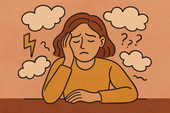
Brain Fog and Fatigue: How to Stop Blaming Yourself
Struggling with brain fog or chronic fatigue? You’re not lazy or failing. Learn how to stop blaming yourself for symptoms caused by MS or chronic illness, and start embracing a more compassionate path to healing and self-understanding.
-

Creating an Emotional Support Team You Actually Trust
Tired of feeling unsupported or misunderstood? Learn how to build an emotional support team you actually trust—with people who see you, hold space for you, and respect your boundaries, especially when living with MS or chronic illness.
-
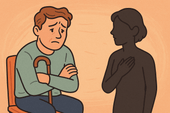
MS, Vulnerability, and the Fear of Being Seen
Living with MS can make vulnerability feel unsafe. Learn why so many people with MS hide their struggles—and how to gently move toward authenticity, self-acceptance, and deeper connection without shame.
-
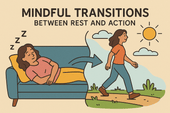
Mindful Transitions Between Rest and Action
Struggling to shift between rest and activity without guilt or overwhelm? This guide offers gentle, mindful strategies to make transitions feel more natural, intentional, and supportive of your nervous system.
-
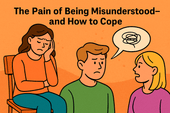
The Pain of Being Misunderstood—And How to Cope
Feeling the sting of being misunderstood? Learn why it hurts so deeply and discover practical, healing strategies to protect your truth, communicate clearly, and rebuild emotional safety when others just don’t get it.
-
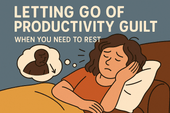
Letting Go of Productivity Guilt When You Need to Rest
Struggling with guilt every time you try to rest? Learn how to release productivity shame, understand why rest matters, and embrace a more compassionate rhythm for healing and recovery—without feeling lazy.
-
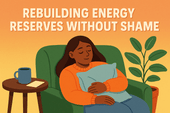
Rebuilding Energy Reserves Without Shame
-

What to Do If You Feel Emotionally Invalidated by Doctors
Feeling emotionally invalidated by your doctor can be deeply distressing. Learn how to recognize medical gaslighting, validate your own experience, and advocate for better care when you’re not being heard.
-

How to Rest Without Feeling Lazy
Rest isn’t laziness—it’s a necessary act of self-respect. Learn how to shift your mindset, let go of guilt, and embrace rest as a vital part of mental and physical well-being.
-
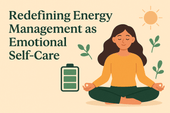
Redefining Energy Management as Emotional Self-Care
Energy isn’t just physical—it’s emotional. Learn how redefining energy management as emotional self-care can help you protect your peace, support your nervous system, and live more in tune with your true needs.
-
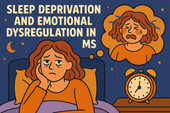
Sleep Deprivation and Emotional Dysregulation in MS
-
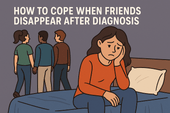
How to Cope When Friends Disappear After Diagnosis
Losing friends after a diagnosis can feel like another kind of grief. Discover why some friends disappear—and how to cope with the emotional fallout while building more supportive relationships.
-

How to Talk to Your Kids About MS Without Overwhelming Them
Struggling with how to explain MS to your kids? Learn how to talk to children of all ages about multiple sclerosis with honesty, clarity, and emotional safety—without overwhelming them.
-
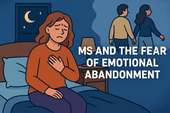
MS and the Fear of Emotional Abandonment
The fear of emotional abandonment is common for people with MS. This article explores why it happens, how it impacts your relationships, and how to create emotional safety and healing.
-
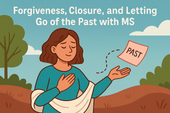
Forgiveness, Closure, and Letting Go of the Past with MS
Living with MS often brings emotional wounds from the past. Learn how forgiveness, closure, and letting go can help you heal emotionally—and reclaim peace in the present.
-
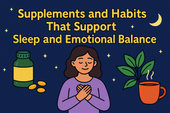
Supplements and Habits That Support Sleep and Emotional Balance
Struggling with poor sleep and emotional ups and downs? Discover calming supplements and daily habits that support deep rest and mental well-being—backed by science and easy to implement.
-
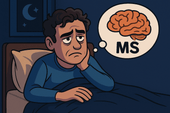
When Insomnia Feels Like Your MS Brain Won’t Turn Off
Struggling to sleep with MS? When your brain won’t shut off at night, insomnia feels relentless. Learn what causes it—and discover science-backed strategies to calm your mind and finally rest.
-

The Emotional Toll of Waking Up Tired Every Day: Why It Hurts More Than You Think
Waking up tired every day takes a deep emotional toll—from mood swings to lost motivation and self-doubt. Learn why chronic fatigue hurts more than you think and how to gently reclaim your mornings.
-
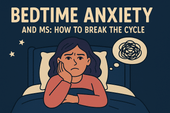
Bedtime Anxiety and MS: How to Break the Cycle
Bedtime anxiety is a common struggle for people with MS—and it’s more than just racing thoughts. Learn how MS-related stress, nervous system dysregulation, and fear of symptoms can create a cycle of sleeplessness, and discover practical, calming strategies to finally reclaim restful nights.
-
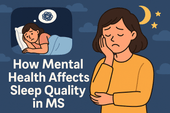
How Mental Health Affects Sleep Quality in MS: Breaking the Cycle of Fatigue and Emotional Distress
Struggling to sleep when you have MS? Discover how anxiety, depression, and neurological changes impact your rest—and what you can do to reclaim it. From CBT-I and calming supplements to lifestyle tips that support both mental health and sleep, this guide offers practical strategies for better nights.
-

Learning to Love Your Life (Even When It’s Not What You Expected)
Your life may not look how you imagined—but it’s still worth loving. Learn how to find peace, purpose, and joy in the unexpected.
-
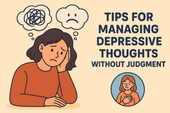
Tips for Managing Depressive Thoughts Without Judgment
Learn how to meet depressive thoughts with compassion, not shame. These gentle, research-backed tools help you manage low moods without self-judgment.
-
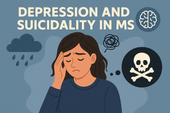
Depression and Suicidality in MS: A Conversation That Needs to Happen
Depression and suicidality in MS are real—and urgent. Learn why we must talk about it, how to spot warning signs, and where to find help and hope.
-
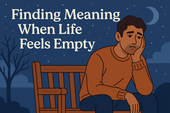
Finding Meaning When Life Feels Empty
Feeling disconnected or numb? Discover gentle ways to find meaning again—even in emptiness—through daily rituals, reflection, and purpose.
-
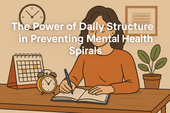
The Power of Daily Structure in Preventing Mental Health Spirals
Daily structure can prevent mental health spirals by creating safety, routine, and self-trust—especially for those with MS, depression, or anxiety.
-

Healing from Emotional Flatness with Sensory Rituals
Feeling emotionally numb or disconnected? Discover how sensory rituals can gently restore pleasure, presence, and emotional resilience.
-
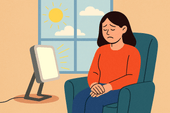
The Role of Light Therapy for Seasonal Depression and MS
Can light therapy ease seasonal depression in people with MS? Discover the science, benefits, and how to use it safely for better mood and energy.
-
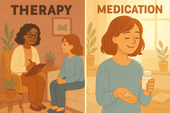
Medication vs Therapy: Treating MS-Related Depression Effectively
Explore whether therapy, medication, or both are best for treating MS-related depression. Understand what works, when—and why combination care is often ideal.
-

How to Support a Partner with MS and Depression
Learn how to support a partner living with MS and depression—practical tips, emotional tools, and ways to protect your own mental health too.
-

The Emotional Cost of Losing Your Old Life
Losing your old life to MS isn’t just about physical symptoms—it’s about grieving the identity, dreams, and freedom you once had. This article explores the emotional toll of invisible grief and how to begin healing without denying the pain.
-
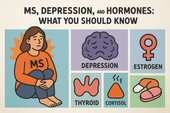
MS, Depression, and Hormones: What You Should Know
MS-related depression isn’t always just emotional—it can be hormonal. Discover how thyroid, sex, and stress hormones influence mood in MS, why women may feel worse during PMS or menopause, and what signs to look for when hormones may be driving emotional instability.
-
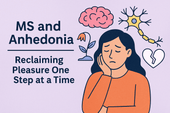
MS and Anhedonia: Reclaiming Pleasure One Step at a Time
Anhedonia—feeling emotionally flat or disconnected—is a common but misunderstood symptom of MS depression. This article explores how neuroinflammation, dopamine disruption, and fatigue can dull your sense of joy—and how small, gentle steps can help you begin to feel again.
-
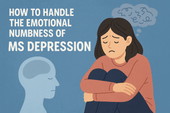
How to Handle the Emotional Numbness of MS Depression
Emotional numbness in MS depression doesn’t always look like sadness—it can feel like nothing at all. Learn why this disconnection happens, how it's tied to neuroinflammation and nervous system overload, and discover science-backed strategies to gently reconnect with your emotions.
-
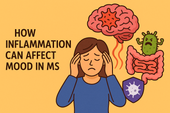
How Inflammation Can Affect Mood in MS
Mood swings and emotional numbness in MS aren’t just psychological—they can be driven by immune system inflammation. This article explores how inflammatory cytokines affect the brain, why mood changes are often biological, and what you can do to calm your nervous system from the inside out.
-
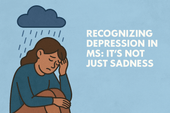
Recognizing Depression in MS: It's Not Just Sadness
Depression in multiple sclerosis (MS) is more than just sadness—it can be a neurological symptom, a side effect of inflammation, or a silent weight that masks itself as fatigue or emotional numbness. This article helps you recognize the hidden signs of MS-related depression, understand the science behind it, and explore real treatment options that support both mental and physical health.
-

Is Cryotherapy Safe for MS? Pros, Cons, and How It Compares to Cold Plunges
Cryotherapy promises quick recovery, inflammation reduction, and mood support—but is it safe for people with MS? This article breaks down the science, risks, and real-life benefits of cryotherapy for multiple sclerosis. You’ll also learn how it compares to cold plunges and which option may be better for calming flares and regulating your nervous system.
-

Can Cold Plunges Help Reduce Inflammatory Flares in MS?
Flares in multiple sclerosis (MS) are often driven by inflammation—but what if cold water could help turn down the heat? This in-depth article explores how cold plunges may help reduce flare frequency and intensity in MS by calming the immune system, lowering pro-inflammatory cytokines, and regulating the nervous system. Learn how to safely use cold exposure as part of your MS recovery routine.
-
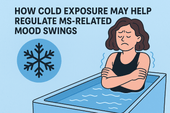
How Cold Exposure May Help Regulate MS-Related Mood Swings
Mood swings are a common but overlooked challenge in multiple sclerosis (MS). This article explores how cold exposure—like cold plunges and showers—may help regulate emotional ups and downs by calming the nervous system, reducing inflammation, and boosting mood-enhancing chemicals. Learn how to use this natural tool safely to support your mental and emotional resilience with MS.
-
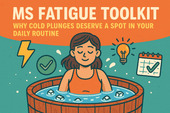
MS Fatigue Toolkit: Why Cold Plunges Deserve a Spot in Your Daily Routine
Fatigue is one of the most debilitating symptoms of multiple sclerosis (MS)—often invisible, misunderstood, and overwhelming. While no single tool can eliminate it, building a personalized fatigue management toolkit can make life more manageable. One surprising contender? Cold plunges. In this article, we explore why cold water immersion might be the refresh button your nervous system needs—and how to safely make it part of your MS fatigue routine.
-
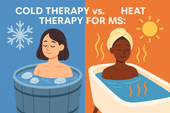
Cold Therapy vs. Heat Therapy for MS: Which One Helps More?
Managing multiple sclerosis (MS) often means navigating symptoms like fatigue, spasticity, pain, and nerve dysfunction. But when it comes to using temperature-based therapies, there’s a question many patients face: Should I be using cold or heat? In this in-depth guide, we explore the benefits, risks, and best use cases of cold therapy vs. heat therapy for MS.
-
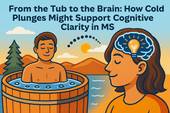
From the Tub to the Brain: How Cold Plunges Might Support Cognitive Clarity in MS
Cognitive fog is one of the most frustrating symptoms of multiple sclerosis (MS). But could cold plunges—those bracing dips into icy water—offer a surprising path to mental clarity? This article explores the emerging science behind cold exposure, brain function, and how a cold tub might help people with MS sharpen focus, lift brain fog, and reset their nervous system.
-
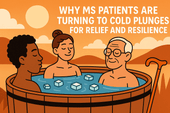
Why MS Patients Are Turning to Cold Plunges for Relief and Resilience
Cold plunges are no longer just for elite athletes and wellness influencers. A growing number of people with multiple sclerosis (MS) are turning to cold water immersion to ease symptoms, build nervous system resilience, and find calm in the chaos of chronic illness. This article explores why—and how—you might want to give it a try.
-

Cold Plunge Therapy: A Hidden Gem for People with MS?
Cold plunge therapy—once the domain of elite athletes and biohackers—is gaining attention among people with multiple sclerosis (MS). Could it help reduce inflammation, calm the nervous system, and ease MS symptoms like fatigue and spasticity? In this article, we dive deep into the science, benefits, safety, and practical application of cold plunges for MS recovery and symptom relief.
-
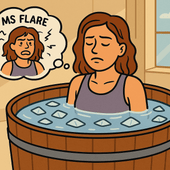
Finding Relief in the Midst of a Flare
MS flares can leave you feeling overwhelmed, exhausted, and mentally foggy. Cold water therapy is emerging as a promising tool to help reset the body and mind after a flare. This article explores how cold exposure supports recovery, calms the nervous system, and can be safely added to your daily routine.
-
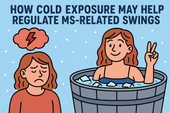
How Cold Exposure May Help Regulate MS-Related Mood Swings
Mood swings in multiple sclerosis (MS) can feel like emotional whiplash—one moment calm, the next overwhelmed, angry, or hopeless. While medications and therapy help, many people with MS are exploring natural strategies to support emotional balance. One surprising tool gaining attention? Cold exposure. In this article, we explore how cold plunges and other forms of cold therapy may regulate the nervous system, stabilize mood, and offer emotional relief for people with MS.
-
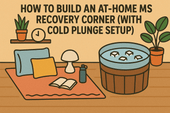
How to Build an At-Home MS Recovery Corner (with Cold Plunge Setup)
Create your personal MS recovery oasis at home—complete with a cold plunge setup. Learn how to design a space that supports healing, reduces inflammation, and helps you manage symptoms naturally.
-
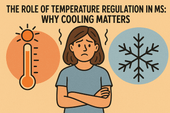
The Role of Temperature Regulation in MS: Why Cooling Matters

















































